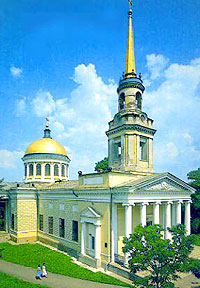| FindaPerfectWife.com |
|
|
Yekaterinoslav 
"The City of Yekaterinoslav - entirely the creation of Prince Grigoriy Potyomkin" - wrote the famous Ukrainian historian Dmytro Yavornitskyi. And the construction plans were far ahead of their time... In the 1770s the Russian Empire bacame anxious with the problem of Turkish domination in Asia Minor. The numerous Turkish fortresses on the Black Sea coast and Dnieper River banks prevented border crossings to the empire to the south. The last Slavic fortified territories were Cossacks' forts - Zaporiz'ka Sich. Cossack AND Russian armies participated in the war with Turkey. In 1774 Prince Grigoriy Potyomkin (1739-91) was nominated as governor of Novorossiysk gubernia (region). In that year the Turkish-Russian war was settled. Now the Cossack army as a rallied military force was not so necessary for the Empire. The fertile land of Zaporizhya had attracted Russian landowners for a long time and the new plan of Katherine II was the gradual destruction of the Cossacks' state. In 1775 Sich was destroyed. Division of the Zaporizhian lands and its gradual settling by foreigners of all nations required construction of new cities and settlements. Then began the realisations of the large projects in glory to Katherine the Great: construction of the cities of Kherson, Nikolaev and Yekaterinoslav. The first site of the new city in 1776 was chosen rather unsuccessfully: at the confluence of Kil'chen' River into the Samara River in the area of Loshakivka. In 1782 the city's population was 2194 inhabitants, however the next year it was ordered the site be transferred because of the unfitness of the place for construction and residing. Spring waters transformed the city into a bog.
The construction plans of the city were huge: 30 verstas (Russian length unit 1 versta=~ 1 km) in length, 25 in width, up to
the Mokra Sura River. The main structures would settle down on the hill. At the corona of it all would be the
Preobrazhenskiy Cathedral the size to be "unique in the whole world") In addition to the Cathedral there were
construction plans to build a huge "magnificent university" (but it was not built).
The streets of the new city were to be direct and wide. On Monastyrskyi Island there was supposed to be a botanical garden.
From 1797 to 1802 the city was called Novorossiysk. It eventually decayed and became a silent village. The great plans were in the past. From them there was only the spirit of what could have been greatness. So it was until 1870, when the city became alive again....
test
|
|||||||||||||